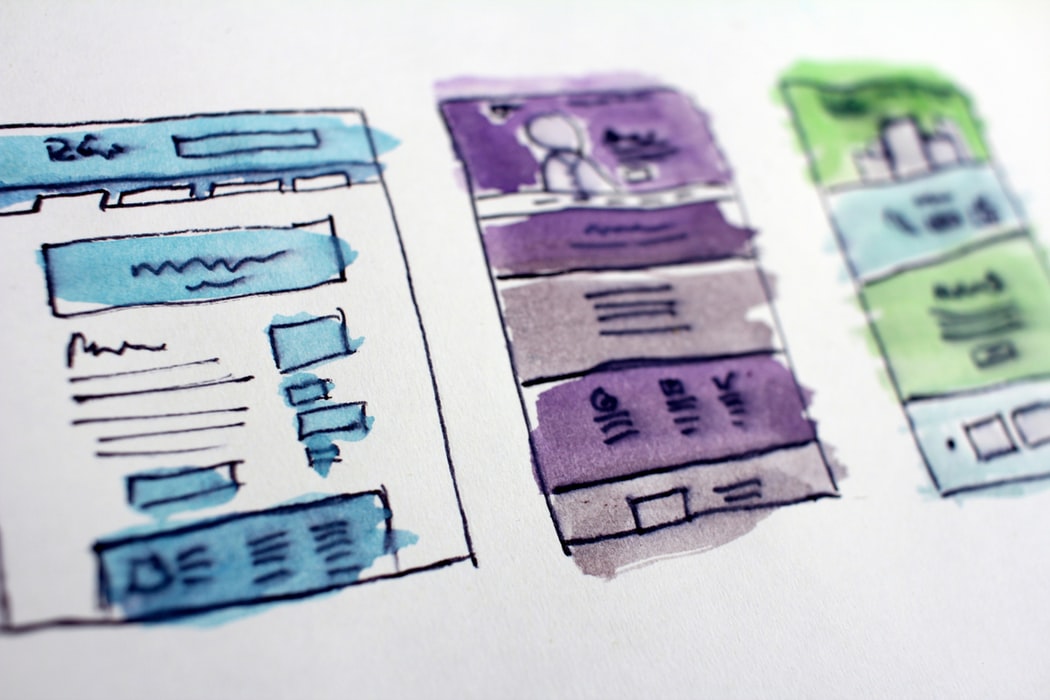Your website is the online shopfront of your business. It needs to provide a first impression powerful enough to persuade visitors to get in touch with you, with an intuitive user experience and easy pathway to purchase or contact.
But even more than this, it needs to be aligned with your marketing efforts to ensure that the two work together in harmony. If we think of your website as a cog in your marketing machine, then if it doesn’t quite match up, it’ll end up breaking down and won’t give you the marketing results you need. So how do we think about the two together?
What are your objectives?
Before we go bounding ahead with your brand new website, make sure to set some clear targets or objectives for it.
Do you want a brochure site to provide information for users and grow your capability as a thought leader? Or do you want an eCommerce platform to drive sales and increase revenue?
What are your ultimate goals for the website - traffic, leads, sales? Do you want to increase the number of people who download an ebook or read a blog post? Or do you want people to sign up for a free trial of your product?
When you know what your objectives are, you'll have a clearer idea of how your design needs to lead people down the path you want.
Which marketing channels are you going to use?
You need to establish what marketing channels you'll be focusing on. Sure, your site needs a good user experience no matter what channels you plan to use, but different channels have slightly different marketing requirements, or can be improved through specific design decisions on your site.
PPC
If PPC is your marketing channel of choice, then you need bespoke landing pages, for a couple of key reasons.
- Landing pages based on the keywords you're targeting will ensure your ad quality score is higher than if you were sending people to a generic page. This, in turn, reduces your cost per click.
- A landing page has a much clearer call to action, designed to increase conversions. If you're paying for traffic, you want that traffic to be primed to convert, so making it easier for them to do so is the main aim of a landing page.
SEO
Is SEO more suited to your business goals? Then you’ll need to think about adding plenty of content to your pages, through long-form content and blogs. This will provide valuable information for your users to engage with and help your site’s organic rankings. Consider the keywords you want to rank for, and what pages can be integral to your site structure to achieve this. You’ll also need to pay more attention to on-page SEO factors such as page structure and meta data.
Social Media
Businesses that are keen on engaging with customers on social should ensure social media buttons are high up on the website, perhaps even consider a live feed on your site to entice people to visit your various social profiles - if you do this, try to design them into your site rather than just plonking a generic feed on there, it'll look much better that way. Take engagement to the next level with a live chat feature on the site so that your visitors have a really easy means of communication with you.
Email Marketing
Email marketing more your cup of tea? Then your newsletter sign up should be a prominent feature of your site, perhaps in a pop-up and in the header of your site. You may want to think about adding gated content on your site that visitors can only access once an email address has been entered to further improve your email marketing list.
Getting these things planned now will ensure they are seamlessly integrated into your site from the beginning, rather than the ‘tacked-on’ approach we see all too often.
Inform your website developer
Next, you need to tell your web developer the full scope of your website and marketing objectives. This is often easier when you go to one company for your marketing and website (like us, for example) but can be achieved separately, as long as everyone understands and can communicate with one another.
Make sure that your developer understands your future growth plans and how the website will be vital in that. Don't be pushed into design for the sake of it - focus on how the design will help you achieve your overall objectives.
Remember best practice
As a rule of thumb, there are a few things that most websites need. It’s always best to start a website project with these things in mind. They include:
- Simple and clear menu navigation
- Contact details in the header and footer
- Eye catching and clear call to actions
- Contact page with multiple ways to get in touch
- Logo that takes you back to the homepage
- Mobile-responsive design
- Fast site speed
The last two are especially important for SEO - Google's mobile-first indexing means that they prioritise sites with a good mobile experience, and site speed affects your rankings as well as user experience.
The earlier points are based on how we as users expect websites to behave. If you click the logo, you expect to be taken back to the homepage, for example. If that doesn't happen, it throws people off - they now have to think harder and work harder to do what they want on your site. The aim of good website design is to reduce friction and make it as easy as possible for visitors to achieve their goal.
Don’t lose sight of your objectives
Best piece of advice; always remember your marketing and website objectives and ensure that every design element or feature relates to your overarching aims. A pretty site is nice, but a site that has been carefully crafted to support your business' growth and goals is far more effective.
You can test different elements to see what is most effective, but again, keep your objectives in mind. If you want more signups, then test elements that are involved in the conversion path for that goal specifically, rather than playing around with different logo sizes or footer designs.
If you’d like work with a business that can design a future-proof site for your marketing objectives, then get in touch with our web design team in Bristol. Our Digital and Design teams work hand in hand to ensure a website that fits all your criteria and, ultimately, generates you new business.



